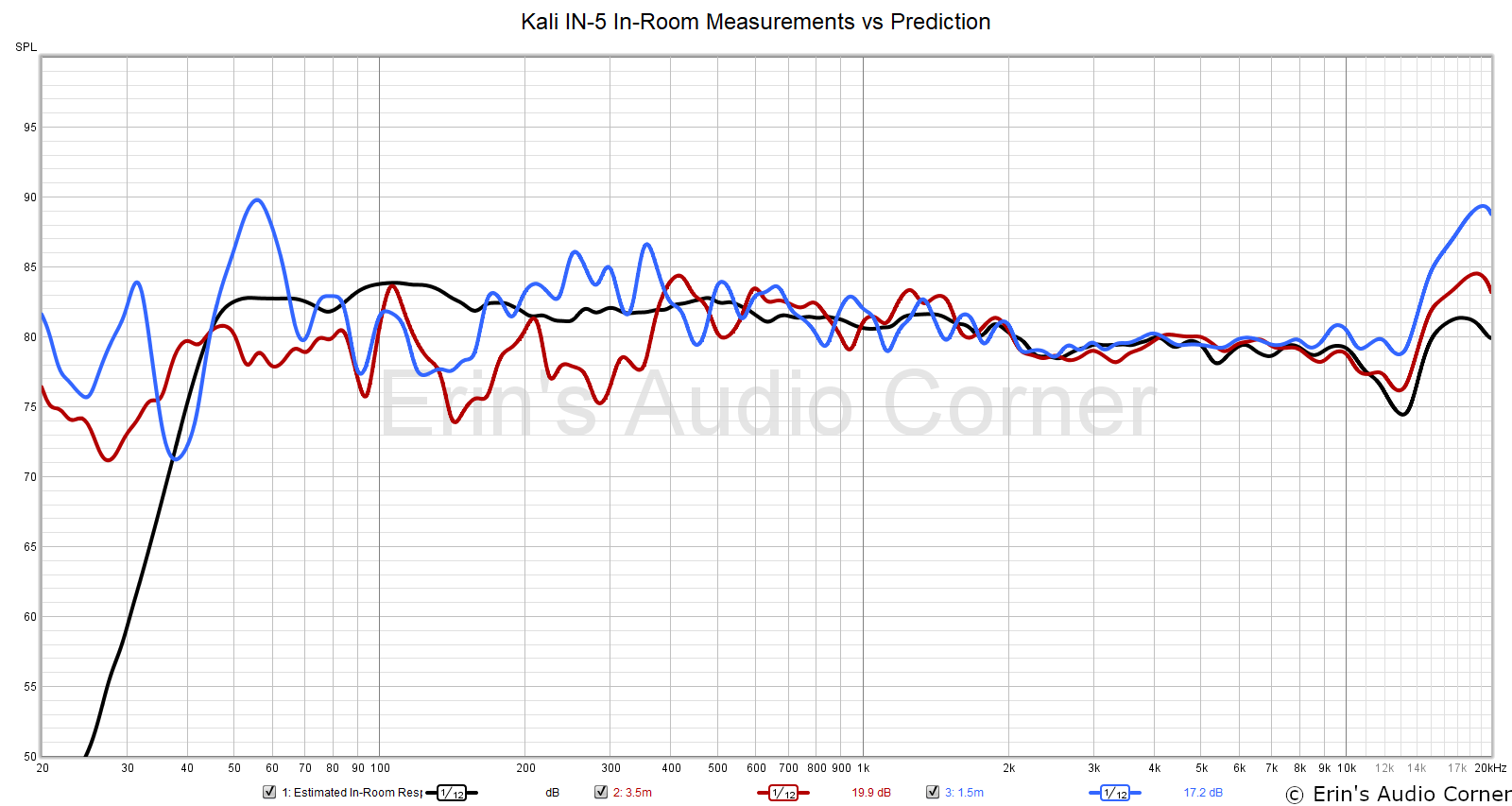Thank you for all that information.
No problem, I'm happy if people find some of it useful!
I have also learned it's real world accuracy is limited to between 1-2Khz and 10kHz.
I guess it depends on how accurate you expect it to be. Deviations of in-room measurements from the PIR are the smallest in the 1-10kHz range (i.e. almost perfect match), but even from about 400Hz to 20Hz we're mostly talking about a couple dB difference at most.
Many loudspeakers show unit-to-unit variation of a similar order, and here we're talking about comparing measurements taken in very different room and from quite different listening distances - so I'd dare say the PIR is amazingly accurate!
Check that 2.6dB booster at 13kHz. While it's flattening the on axis response, it's pumping up the already boosted signal on the horizontal axis.
Sure, but that is only because that specific EQ preset optimizes for LW flatness with 100% weight, and that specific loudspeaker model has inconsistent directivity in that region.
However, note that a) the side wall early reflection will cover a significantly larger distance compared to direct sound and therefore >10kHz region in the reflected sound will be more attenuated by air absorption, and b) >10kHz part of the spectrum contains very little energy in most recordings (which is also an argument no to EQ there), so perceptually speaking this might not really be a big issue.
Let me also reiterate that I feel good loudspeakers (such as Revel M16 I took as an example in my previous post) don't need such EQ correction.
Also, note that I actually developed three different EQ profiles for Revel M16 loudspeaker while
doing this set of experiments, with different weights assigned to different attributes:
Flat LW target EQ:
Highest preference score target EQ:
70% flat LW and 30% smooth PIR target:
My listening impressions after testing all of these filters (and many more) were that, while all audibly changed the loudspeaker sound to an extent, IMHO none of them made it worse - but also not significantly better. This is because Revel M16 is simply a good speaker as is and IMHO doesn't require correction. But there are loudspeaker with good directivity and poor LW response - those can benefit from such EQ presets significantly! See
one such example here.
Center stage is an illusion (hence the name phantom image) created in our brains by merely the side reflections.
Can you provide a reference to back this statement?
In my experience center phantom image exists even if side reflections are largely absorbed, because it is mainly created by the direct sound from both loudspeakers which sum and create the center image illusion. In very extreme cases (listening in anechoic chamber) in-head localization can occur, similar to headphones - but I assume there are not that many such residential spaces.
Side wall reflections can however influence the phantom image and soundstage size.
More side reflections result in a wider and more diffuse phantom images and a soundstage that extends laterally beyond the loudspeakers, while less reflections result in more precise/focused phantom images that are fully contained between the two loudspeakers.
That frequency will reflect from the side wall boosted and shift the sound of that signal more to that side than it needs to be as it's going to be louder than it should. In the imaginary stage, that signal was not coming from the speaker so correcting its SPL at the speaker didn't help anything and ruined its location at the imaginary sound stage we were hearing. Vertical directivity similarly determines the center stage height and vertical precision of sound locations.
Again, I'll have to ask for references. My own experience and the research I've read doesn't seem to align with these views, but I'd of course love to learn more in case such research exists!
I could agree with you if the algorithm only corrected for problems that will be improved on axis, at ER and PIR. Some filters above are of that kind but some are not although I have seen ER/PIR parameters in the code generating these filters?
As I said, that was only one example of the very many approaches that can be taken (some illustrated above) - unfortunately we don't have preference research yet that tell us how best to optimize such filters, so we have to rely on the existing loudspeaker preference research combined with our own experience and some conjecture - IMO it is better than nothing and can be quite valuable with certain loudspeakers!
The filters I show in this and previous post I generated myself with the VituixCAD optimizer and based on my own quasi-anechoic polar measurements.
Lastly, most of the useful filters above are below 1-2kHz but it's also shown in the predicted vs actual comparison graphs that these will ALL need to be completely changed for every room.
I disagree, the filters are definitely meaningful from about 3-500Hz to about 8-10kHz; in-room steady-state measured response doesn't accurately describe what we hear above the transition frequency (around 300Hz in many "small" rooms) - there we perceive more and more of the loudspeaker direct sound, which means that filters derived from anechoic measurements make sense in that region.
In fact, these graphs are great examples for why you shouldn't EQ above 1-2kHz.
I'll have to respectfully disagree, due to reasons stated above and before.


